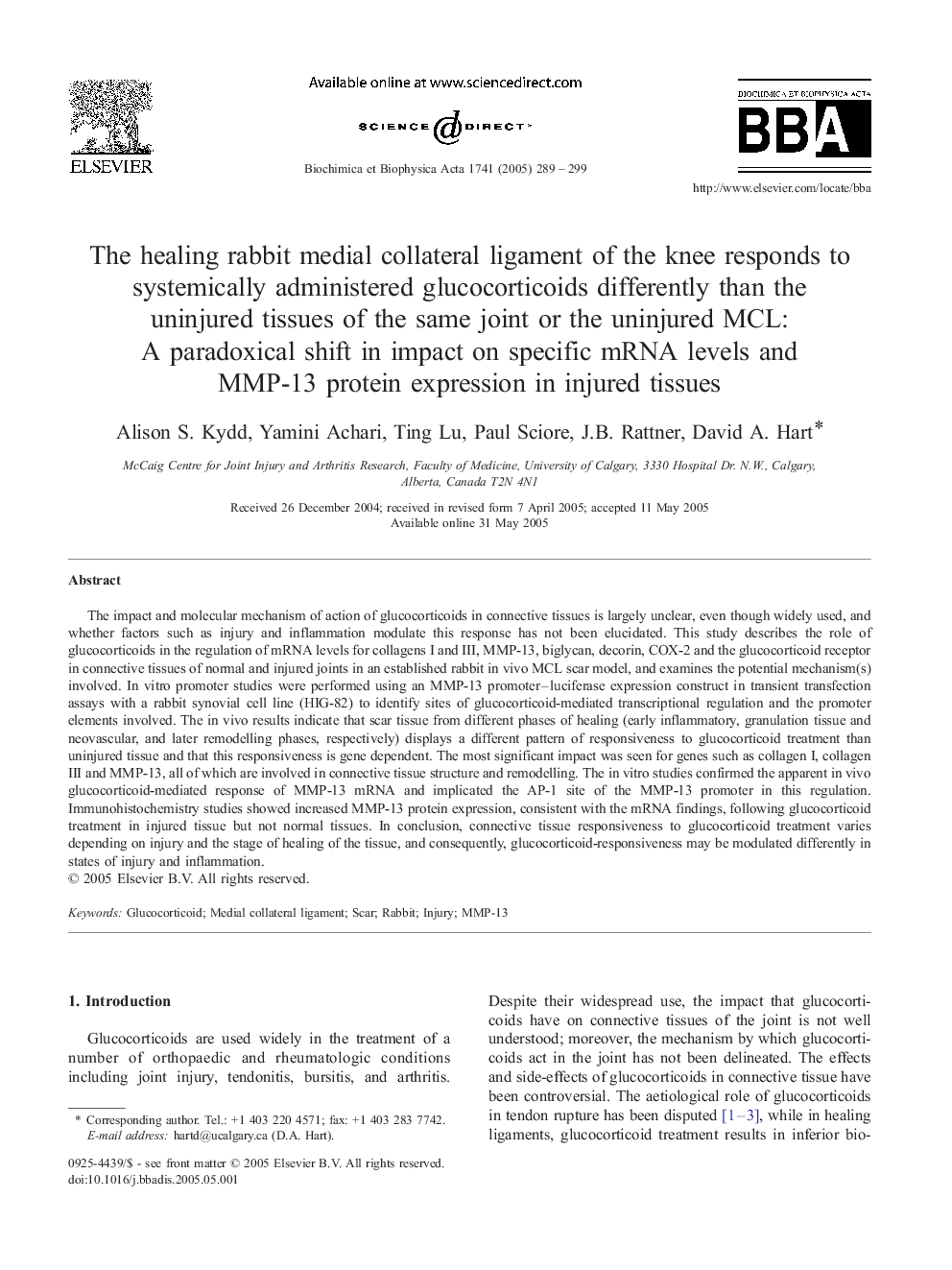| Article ID | Journal | Published Year | Pages | File Type |
|---|---|---|---|---|
| 9879404 | Biochimica et Biophysica Acta (BBA) - Molecular Basis of Disease | 2005 | 11 Pages |
Abstract
The impact and molecular mechanism of action of glucocorticoids in connective tissues is largely unclear, even though widely used, and whether factors such as injury and inflammation modulate this response has not been elucidated. This study describes the role of glucocorticoids in the regulation of mRNA levels for collagens I and III, MMP-13, biglycan, decorin, COX-2 and the glucocorticoid receptor in connective tissues of normal and injured joints in an established rabbit in vivo MCL scar model, and examines the potential mechanism(s) involved. In vitro promoter studies were performed using an MMP-13 promoter-luciferase expression construct in transient transfection assays with a rabbit synovial cell line (HIG-82) to identify sites of glucocorticoid-mediated transcriptional regulation and the promoter elements involved. The in vivo results indicate that scar tissue from different phases of healing (early inflammatory, granulation tissue and neovascular, and later remodelling phases, respectively) displays a different pattern of responsiveness to glucocorticoid treatment than uninjured tissue and that this responsiveness is gene dependent. The most significant impact was seen for genes such as collagen I, collagen III and MMP-13, all of which are involved in connective tissue structure and remodelling. The in vitro studies confirmed the apparent in vivo glucocorticoid-mediated response of MMP-13 mRNA and implicated the AP-1 site of the MMP-13 promoter in this regulation. Immunohistochemistry studies showed increased MMP-13 protein expression, consistent with the mRNA findings, following glucocorticoid treatment in injured tissue but not normal tissues. In conclusion, connective tissue responsiveness to glucocorticoid treatment varies depending on injury and the stage of healing of the tissue, and consequently, glucocorticoid-responsiveness may be modulated differently in states of injury and inflammation.
Related Topics
Life Sciences
Biochemistry, Genetics and Molecular Biology
Ageing
Authors
Alison S. Kydd, Yamini Achari, Ting Lu, Paul Sciore, J.B. Rattner, David A. Hart,
